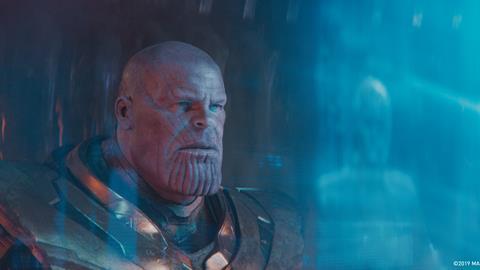New features include integrated compositing and interactive light mixing

Chaos Group has released V-Ray 5 for Maya, the latest version of its production renderer.
Over 300 TV series and films have used their products, including the makers of Avengers: Endgame, Terminator: Dark Fate, and Game of Thrones.
New features for the renderer include integrated compositing, interactive light mixing, and powerful scene management.
The redesigned V-Ray buffer is where two of those are hosted. Light Mix allows artists to create many different lighting scenarios from a single render. Colour and light intensity can be adjusted instantly, and, once finished, artists can save their recipes, send the layers to compositing and update the lights in their scenes.
Meanwhile, Layer Compositor will allow artists to composite their renders directly in the new V-Ray Frame Buffer. Users can now combine and grade render passes, set blending modes and adjust colours for more in-depth previews before sending the layers on to Nuke.
Other new features include Light Path Expressions - which lets artists construct their own render passes, and specific lighting contributions can now be outputted with time-saving presets, custom expressions or even combined with boolean operations to get a pass ready for comp.
Also, there is a new VRayProxy node – which means users can start working right away, using a new hierarchy view to select, hide, or assign materials to different objects inside the proxies. Rules can also be created, making it easier to modify multiple objects at once.
The full range of new features can be found at the product page.
V-Ray 5 for Maya is now available for Windows, Mac OSX, and Linux at $1180 (£900.95) for a perpetual licence, and $590 (£450.47) for upgrades. Term licensing is available at $470 (£358.85) (annually) and $80 (£61.08) (monthly), or as part of the V-Ray Collection, an annual plan that gives users full access to 15 Chaos Group products and services for $699 (£533.70) a year.
Other New Features include:
-
Native ACEScg Support – Artists can now create color-accurate workflows in the new standard for professional production. Once selected, V-Ray makes automatic colorspace adjustments for textures, dispersion, sun & sky and light temperature, bringing immediate consistency to a shot.
-
Coat Layer – The updated V-Ray Material can now generate reflective coatings on surfaces without the use of blend materials.
-
Sheen Layer – Easily simulate soft, microfiber fabrics like velvet, satin and silk inside the updated V-Ray Material.
-
V-Ray GPU Updates – V-Ray GPU supports every new feature in V-Ray 5, as well as 2D displacement, OSL textures and memory tracking. Initial support for out-of-core geometry has also been added to help users render scenes when they are too big for a GPU’s RAM.
-
Material Presets – Save time making common materials with new presets for metals, plastics, glass and more. Presets for common hair colors like blonde, brown and black have been added as well.
-
Texture Randomization – For more realistic textures and materials, artists can now add more variety and subtle imperfections with the new VRayUVWRandomizer map and improved VRayMultiSubTex controls.
-
Stochastic Texture Tiling – Automatically remove tiling artifacts with the new VRayUVWRandomizer.
-
Dirt and Weathering – With the improved V-Ray Dirt texture, users can add dirt to cracks and crevices, create procedural streaks or cover an entire surface.
-
New Sun and Sky Model – Improves accuracy when the sun is at the horizon, including the magic hours right before sunrise and after sunset.
-
Blue Noise Sampling – New algorithm update can make images (and noise) look cleaner through fewer samples.
-
Filmic Tonemapping – HDR images can now mimic the properties of film to give images a cinematic look.





























No comments yet